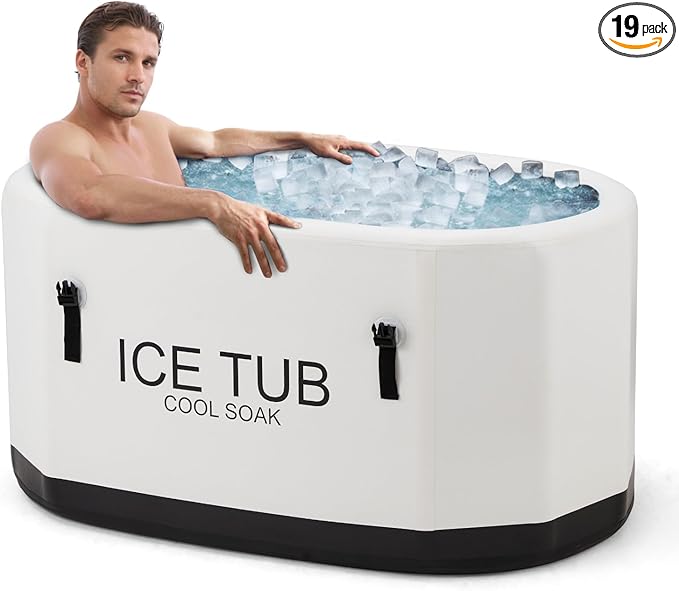In recent years, cold plunging has gained popularity among athletes and fitness enthusiasts for its incredible benefits, from reducing muscle soreness to enhancing recovery. But when it comes to runners, a common question arises: should you take a cold plunge before or after your run? Let’s dive into the science and practical considerations to help you decide what works best for your routine.
The Science Behind Cold Plunging

Cold water immersion (CWI), commonly known as cold plunging, involves submerging your body in water temperatures ranging from 50°F to 59°F. This practice helps reduce inflammation, alleviate soreness, and promote faster muscle recovery. It also stimulates the release of endorphins, improving mood and focus. Understanding these benefits can help you decide when to incorporate cold plunging into your running regimen.
Benefits of a Cold Plunge Before Running
Taking a cold plunge before your run might sound unconventional, but it offers unique advantages:
- Enhanced Alertness: The shock of cold water invigorates your body, increasing alertness and mental clarity—perfect for those early morning runs.
- Lowered Core Temperature: A pre-run cold plunge can reduce your core body temperature, helping you stay cooler longer during your workout, especially in hot climates.
- Improved Circulation: Cold exposure causes your blood vessels to constrict and then dilate, improving blood flow and delivering oxygen to your muscles more efficiently.
When to Consider: Use a pre-run cold plunge for short or moderate-intensity runs, especially in warmer weather.
Benefits of a Cold Plunge After Running
Post-run cold plunges are a more traditional approach and are widely praised for recovery benefits:
- Reduced Muscle Inflammation: Cold water immersion reduces swelling and inflammation caused by intense physical activity.
- Alleviation of Soreness: It helps flush out lactic acid buildup, preventing delayed onset muscle soreness (DOMS).
- Faster Recovery: A cold plunge post-run accelerates the healing of microtears in muscles, allowing you to bounce back faster.
When to Consider: Opt for a post-run cold plunge after long-distance or high-intensity runs to maximize recovery.
Choosing the Right Cold Plunge Tub
To incorporate cold plunging into your routine, you’ll need a reliable setup. Here are some top-rated options available on Amazon:
1. The Cold Pod Ice Bath Tub
This budget-friendly, portable tub is perfect for beginners. Its multi-layered insulation ensures optimal cold temperatures, and it’s easy to set up indoors or outdoors.
- Key Features: Portable, durable, and easy to maintain.
- Price: Affordable option for all budgets.
- Buy it here: The Cold Pod Ice Bath Tub
2. Ice Barrel 400
Designed for full-body immersion, the Ice Barrel is compact yet spacious. Its ergonomic design ensures comfort and durability.
- Key Features: Space-saving design, durable material.
- Price: Mid-range investment.
- Buy it here: Ice Barrel 400
3. Polar Recovery Tub
This inflatable cold plunge tub is easy to set up and store, making it ideal for those with limited space. Despite its portability, it offers excellent insulation.
- Key Features: Lightweight, easy to store.
- Price: Affordable and convenient.
- Buy it here: Polar Recovery Tub
4. Redwood Outdoors Cold Plunge Tub
Built to withstand outdoor elements, this tub is perfect for nature lovers who want to enjoy their cold plunges outdoors.
- Key Features: Weather-resistant, spacious.
- Price: Premium outdoor option.
How to Cold Plunge Safely
To reap the benefits of cold plunging, follow these best practices:
- Set the Right Temperature: Aim for water temperatures between 50°F and 59°F.
- Limit Duration: Keep your sessions to 5-10 minutes to avoid risks like hypothermia.
- Listen to Your Body: If you feel dizzy, overly cold, or uncomfortable, exit the plunge immediately.
- Stay Consistent: Incorporating cold plunging regularly will help your body adapt and maximize benefits over time.
- Consult a Professional: If you have pre-existing conditions, seek advice from a healthcare provider before starting.
Building Cold Plunging into Your Routine
- For Pre-Run Plunges: Use them sparingly to enhance alertness and focus on shorter runs.
- For Post-Run Plunges: Make them a staple in your recovery routine, especially after intense or long-distance sessions.
Conclusion
Whether you choose to take a cold plunge before or after your run depends on your specific goals. Pre-run plunges boost energy and performance, while post-run plunges aid recovery and reduce soreness. With the right equipment and practices, you can enhance your running experience and overall well-being.
Take the plunge today and discover how this simple practice can transform your running journey. Ready to get started? Explore the best cold plunge tubs on Amazon and elevate your training routine!
